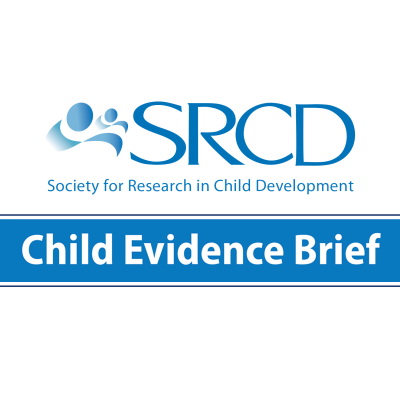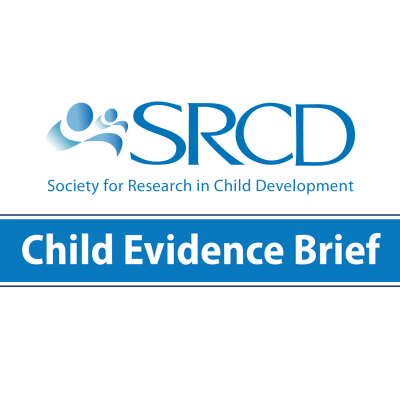Research on No Child Left Behind Can Inform Reauthorization Process
Social Policy Report Brief, Volume 21, Issue 4
Why Does This Matter?
No Child Left Behind (NCLB), the $13.3 billion federal effort to raise students’ academic achievement, is in its fifth year. As policymakers work to reauthorize this legislation, public opinion is evenly divided over the act and its effects. A new analysis of NCLB’s first years yields crucial information on its effectiveness and suggestions for changes that can inform the debate about this legislation.
NCLB does not appear to be having the profound effects on achievement that were hoped for, but there are signs that gains are being made. Research shows that a number of changes could improve the measure.
Policy Implications
An analysis of NCLB’s first years shows that:
- Overall effectiveness: Evidence is limited but mostly neutral to positive. There is little evidence that potential negative effects have materialized.
- Student achievement: NCLB may be raising average achievement levels at the expense of high- and low-achieving students. Since adequate yearly progress (AYP) is defined by the percentage of proficient students, schools can boost achievement with progress only among students just below the proficiency cutoff.
- Proficiency standards: Because states have discretion in setting these standards, there is considerable variation, boosting costs and management problems and masking differences in achievement across states. It may be time to consider national content and performance standards, definitions of highly qualified teachers, and achievement tests.
- School accountability: Latitude in setting AYP targets for school accountability results in widely varying implementation. AYP targets must be revised; there is no proof that states can reach the 100% proficient target. A “valueadded” component should be added so schools focus on all students, not just those at the brink of proficiency.
- Highly qualified teachers: NCLB also gives discretion to states to raise student achievement through highly qualified teacher requirements. States should define more rigorously criteria for highly qualified teacher status.
What the Research Says
Even at this stage of NCLB’s implementation, there is research from which to draw conclusions and revise this act:
- Student achievement: Test results show positive changes in math but no real changes in reading. A 2007 report suggests an even more positive effect: More states boosted achievement since 2002 than showed declines, with the greatest gains at elementary levels and in math.
- Achievement gap: Preliminary evidence indicates modest success. A recent report notes that more states have seen a narrowing than a widening in the percent of proficient students between blacks and whites, Hispanics and whites, and children from different socioeconomic backgrounds.
- School accountability: AYP targets will rise until 2014, when 100% proficiency is required. Although some predict many schools will fail, a study of NCLB in 2003-04 found that 75% of schools and 71% of districts met AYP. Of schools that failed, about 23% failed because of only one group of students, indicating that most schools failing AYP fall short for multiple groups of students. Large schools with diverse student bodies seem especially likely to fall short.
- Highly qualified teachers: Changes in teacher quality have been small and inconsistent. Research suggests that teacher quality is still more concentrated in nonpoor than poor schools.
Facts at a Glance
- NCLB had a $13.3 billion budget in 2006 of the U.S. Department of Education’s $56 billion budget, slightly less than one-half of 1% of the federal government’s $2,709 billion in total outlays.
- NCLB requirements have been phased in over time. New teachers were required to be highly qualified in 2002-2003 and all teachers were required to be highly qualified in 2006-2007. In 2006, all students in grades 3-8 were required to be tested in mathematics and reading—science testing at these grade levels is required in 2008.
- By 2014, all schools have to be 100% proficient in order to meet AYP targets.
- Public sentiment is mixed: In a September 2006 poll, 32% of respondents had a very or somewhat favorable view of NCLB, while 31% had a very or somewhat unfavorable view. Just over a quarter of respondents said the act was helping local schools, while 21% said it was hurting.
This brief summarizes a longer Social Policy Report, "NCLB: State Interpretations, Early Effects, and Suggestions for Reauthorization," by Andrew C. Porter, Dean of the Graduate School of Education at the University of Pennsylvania, and Morgan S. Polikoff, a doctoral candidate in the Graduate School of Education at the University of Pennsylvania. That report is based on material in a chapter by Dr. Porter [Porter A. C. (2007), Lessons learned from standards-based reform: Implications for the reauthorization of NCLB. In A. Gamoran (Ed.), Standards-Based Reform and the Poverty Gap: Lessons for “No Child Left Behind.” Washington, DC: Brookings Institution Press].


